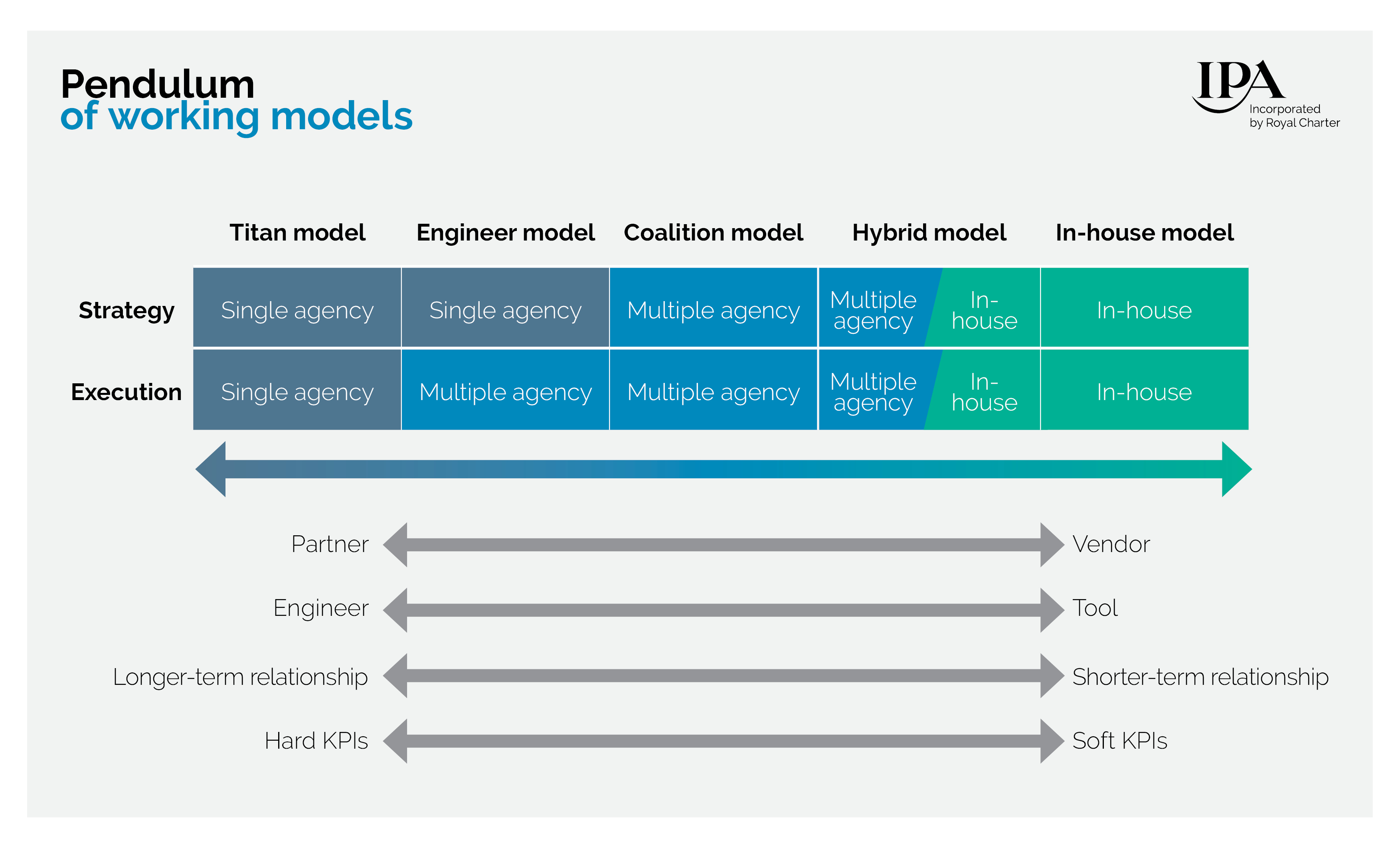There is notable polarisation regarding what the role of the future agency will be in helping brands meet the most pressing changes expected to impact the consumer landscape over the coming decade, for which a pendulum of five models will be called upon.
These are the findings of a significant new IPA report, The Future of Brand and Agency Relationships, carried out by the Foresight Factory under Nigel Vaz’s presidential agenda and unveiled at the IPA’s Business Growth Conference.
Divided into three key areas, the report draws on new 2020 consumer research to analyse how consumer futures will be impacted in the 2020s using a framework of core human needs and macro consumer drivers. It examines the most significant developments that will shape brand and agency approaches to effective marketing in the 2020s via interviews with leading brand and agency experts and, crucially, it identifies the five core models of brand and agency relationships that will prove most effective in meeting the challenges and needs presented by these predicted changes to the consumer and industry landscape. Each of these models has its strength and weaknesses, ways of working, remuneration and measurement and varying degrees of growth potential.
The Future of Brand and Agency Relationships report

Key report findings:
Consumer trend developments:
- There is industry consensus on the challenges facing the marketing industry and a clear industry awareness and understanding of the most pressing changes expected to impact the consumer landscape over the coming decade.
- These developments include the acceleration of virtual trends, new forms of value exchange across consumers’ data interactions, more demand for more empathetic brands who imbed human values and diversity at their heart, leading to a heightened importance on consumer centricity and the expected expansion of multi-dimensional marketing, with purpose-led communication to a growing spectrum of stakeholders.
The role of the agency to address these changes:
- The report identifies five relationship models that it believes will be most prominent over the coming decade. These models are best viewed as sitting on a pendulum rather than as a static spectrum; all five models will be utilised in a complex ecosystem of brand and agency working relationships, with the relevance of each model varying from client to client and from campaign to campaign. The report also outlines the models it believes will have the most significant growth potential, relative to one another. They are:
- The Titan Model - a brand selects one single external body to provide all marketing services across both strategy development and the execution of advertising operations. (The report predicts its growth potential is moderate.)
- The Engineer Model - the overarching marketing strategy is developed by a single external body, while the execution of the strategy is undertaken by a multitude of agencies, (Its growth potential is predicted to be significant.)
- The Coalition Model - the overarching marketing strategy for a brand and the execution of the strategy is developed and deployed by a coalition of multiple agencies. (Its growth potential is deemed low.)
- The Hybrid Model - a combination of in-house client services and external agency services are utilised for both the development and execution of the marketing strategy. (Its growth potential is considered as significant.)
- The In-house Model - the vast majority of a brand’s marketing activities are moved in-house; operated by the brand itself. (It has a moderate growth potential, according to the report.)
- The Titan Model - a brand selects one single external body to provide all marketing services across both strategy development and the execution of advertising operations. (The report predicts its growth potential is moderate.)
- There is a polarised view of the role of the agency to address these changes, particularly whether a single agency should have the remit and capability to help brands in responding to their full range of challenges, or whether they should provide focused and highly specialised services for one specific marketing function.
The implications for the future of agencies’ business strategies and growth:
- Agencies will need to build their holistic consumer understanding, develop their operational clarity, optimise their long-term strategy and increase their agility if they are to work effectively across the pendulum of relationship models.
- Underpinning this, they will need to ensure they have the talent, internal processes and working practices to work across the full range of models.
This report comes at a pivotal moment for agencies and their clients and should give us all food for thought. For agencies, it affords an opportunity to consider which business model will best suit them and help their clients to identify and realise value. For clients, it acts as a guide to which of their agency partners can help, how and when. The report concludes – as many of us intrinsically know to be true – that despite disruptive change, and sometimes because of it, there is an incredible opportunity ahead for agencies to become long-term and integral business partners to their clients, fundamental to their commercial success and sustainable growth.
Says Meabh Quoirin, CEO, Foresight Factory: “As our research shows, the consumer world is in a state of flux. We’ve never seen so many consumer trends being impacted and knocked-off course as we have due to the pandemic. Nevertheless, our analysis allows the industry to see beyond the immediate upheaval, enabling brands and agencies to imbed agility into their business practices over the coming decade, and empowering them to respond to a fluid and ever-changing consumer landscape.”